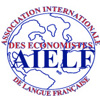Heterogeneity of the Okun’s Law Coefficients across developed countries : Empirical evidence on nonlinear influence of the technological gap
Jean-Phillippe Boussemart
Université de Lille, CNRS, IÉSEG School of Management, France
jp.boussemart@ieseg.fr
ORCID : 0000-0001-7932-6940
Walter Briec
Université de Perpignan, France
ORCID : 0000-0001-8411-2146
Roger Perman
University of Strathclyde, Department of Economics, United Kingdom
ORCID : 0000-0002-6862-7462
Christophe Tavera
Université de Rennes 1, Faculté des sciences économiques, France
ORCID : 0000-0002-3774-0892
Abstract : The magnitude of short run variations in unemployment induced by output shocks is influenced, interalia, by a variety of supply-side characteristics of the economy in question. This paper argues that one important element of those characteristics is a coun- try’s ‘distance’ from the technological frontier. Using both, a panel interaction model and a panel threshold model, we show that the value of the coefficient linking short run vari- ations in unemployment to output changes (often known as the Okun’s Law Coefficient) is influenced by the technological distance of a country to the world efficiency frontier. Specifically, the larger the distance to the frontier, the larger the impact of real GDP movements on unemployment rate variations. Moreover, the magnitude of this impact is both considerable and exhibits wide variation between countries; decomposition of the total derivatives of unemployment with respect to GDP shows that the technology-induced share of this derivative is around 20% for Norway and Denmark countries (close to the frontier) and around 40% for Greece (which has the largest technological gap). Traditional growth enhancing demand side policies should thus go in hand with adequate supply side policies in order to stabilise or reduce the unemployment rate in technologically advanced countries.
Keywords : unemployment rate, Okun’s Law, technological gap, labour hoarding, interaction model, threshold model.
Jel Classification : B22, E60, E32, E24, B23.

